
As teachers of literacy, you are well-aware of how profoundly setting can impact a story’s development from plot to character behavior. As you begin to write the story for this school year alongside your students, take time to create a character-building classroom setting that will foster independence, collaboration, and ownership so that a community of learners can grow together.
As teachers of literacy, you are well-aware of how profoundly setting can impact a story’s development from plot to character behavior. As you begin to write the story for this school year alongside your students, take time to create a character-building classroom setting that will foster independence, collaboration, and ownership so that a community of learners can grow together.
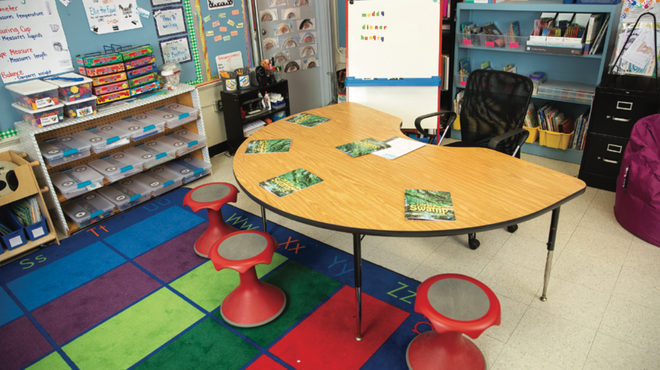
Here are some ideas that you might want to consider as you begin to set up the learning spaces in your classroom.
1. Use space purposefully. Your classroom community works together in different ways throughout the day and your classroom design needs to support a multitude of practical needs.
- Designated spaces. Children need to know where to go to do certain types of work. This predictability makes for smooth transitions and gives everyone a feeling of security. Your community will need areas for whole-group meetings, small-group instruction, and independent work. You will also want to set up a library. Children will have to regularly move from one space to the next, so think about a classroom design that allows them to travel safely and quickly from place to place. Don’t forget to consider what teaching tools and resources you will need within reach in these areas, as well!
- Practical spaces. It’s also important to consider the big picture in your classroom. While the little nook beside the guided reading table in your kindergarten classroom might seem like a perfect fit for an imaginary play center, think about how distracting that juxtaposition will be for young readers. While it might be practical to put the iPad center near the charging stations, it will be a disaster if the area is blocked from your view by a large bookshelf. While the very top of your wall might have room for your alphabet chart, this resource might serve students better if it is placed at eye-level. Placement of all the items in your classroom is important!
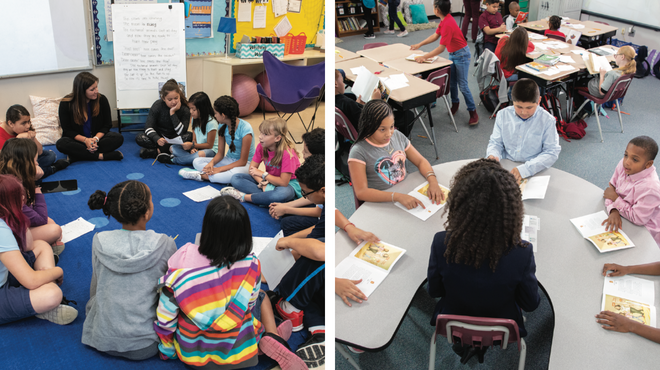
- Flexible Spaces. Space is at a premium in any classroom. Consider creating flexible spaces that serve multiple purposes. While a grouping of desks might be assigned to individuals for specific blocks of the day, it might serve as a place for partner work during independent literacy work time. Consider creating “grab and go” materials baskets so that children have what they need when they choose a favorite spot to work on meaningful literacy activities.
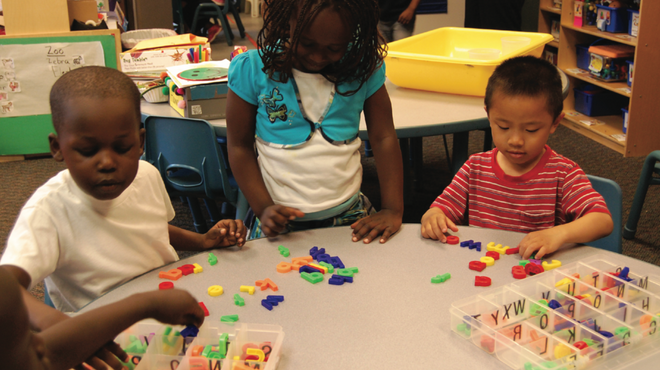
2. Make room for student work. It can be VERY tempting to fill up your classroom walls with the adorable décor trends you have been collecting on Pinterest all summer or with the vintage book posters that you inherited from the recently retired teacher down the hall. Resist the cuteness. Students need to see their own hard work up on the wall as a daily reminder that they belong in this community and that their contributions are valued and celebrated.
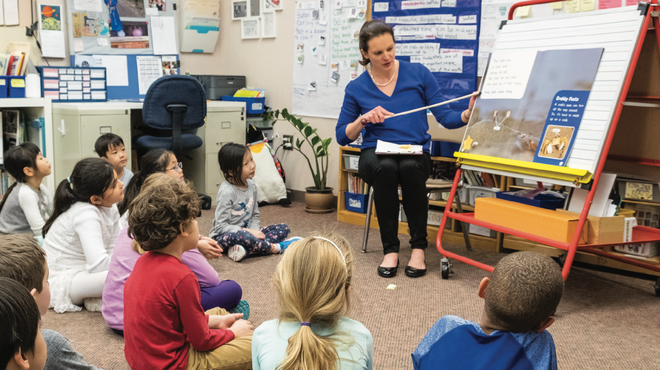
Do not be afraid to begin the year with walls that are mostly blank. Thoughtfully designate specific display areas. For example, think about where you will hang meaningful co-constructed anchor charts and shared writing pieces so that they are visible from independent workspace. Where can you post student writing at eye level to catch the attention of everyone who walks by? The walls may make look sparse on day 1, but not for long. What will last is a feeling of belonging and pride constructed by you and the students together.
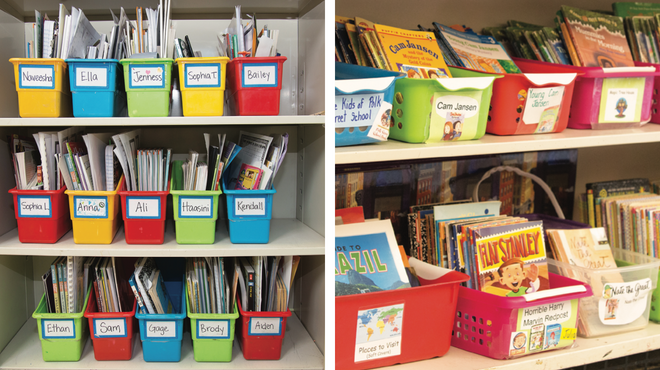 3. Organize for Independence. We all know that spaces stay tidy when everything in them has its own place. A clutter-free, organized space helps keep the focus on teaching and learning. Organization is also a key to independence. Clearly defined, appropriate storage areas that are labeled with pictures and/or words give even the youngest students the support they need to gather and return materials as needed. When students can take care of their own needs, they feel secure, and the entire group functions more efficiently.
3. Organize for Independence. We all know that spaces stay tidy when everything in them has its own place. A clutter-free, organized space helps keep the focus on teaching and learning. Organization is also a key to independence. Clearly defined, appropriate storage areas that are labeled with pictures and/or words give even the youngest students the support they need to gather and return materials as needed. When students can take care of their own needs, they feel secure, and the entire group functions more efficiently.
Consider this:
- How will you organize your classroom so designated and flexible spaces work together to support independence and collaboration?
- As you designate display spaces on your wall, take a child- centered approach. What will the walls look like from a student perspective? How will the displays support independence and community?
- What supports do your students need to understand the organizational systems and procedures in their classroom so that they can sustain them with ownership, confidence, and independence?
• • •
While these classroom design decisions can seem mundane, they affect the way your classroom community navigates all of their days together. There are always opportunities for revisions, but the choices you make now about your classroom setting will help to drive your community’s narrative all year long.
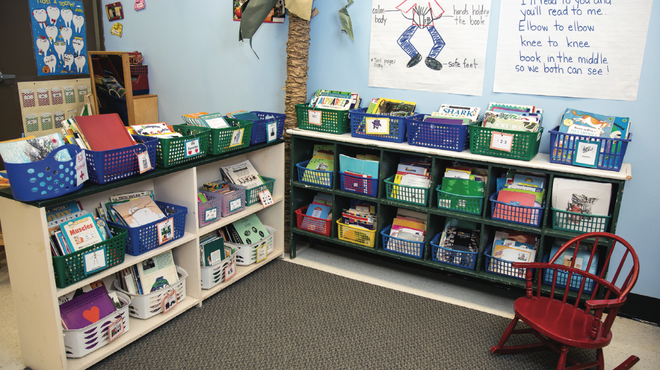
Want to learn more and be part of the conversation? Join the Fountas & Pinnell Literacy™ Educator Community on Facebook where Fountas & Pinnell Literacy™ (FPL) educators can collaborate, learn, reflect, and discuss pedagogy and classroom implementation alongside peers and FPL consultants.
This blog is #1 in the 3-part Create a Healthy Classroom series and was adapted from Leading for Literacy: What Every School Leader Needs to Know by Irene Fountas and Gay Su Pinnell. Click the links below to read the other blogs in the series:
-
1. Create a Healthy Classroom Community: The Physical Setting
-
2. Create a Healthy Classroom Community: A Climate of Belonging
-
3. Create a Healthy Classroom Community: The Home-School Connection
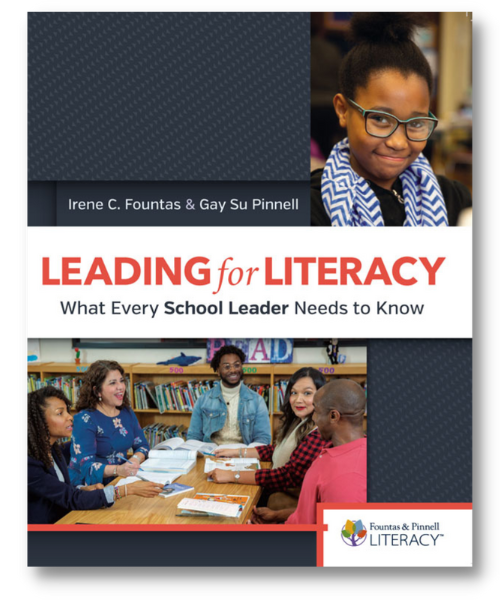
Leading for Literacy provides guidance for creating a culture of collaborative professionalism, facilitating conversations about effective practice, and making high-impact decisions based on evidence and the values identified by the school team. An important resource for every school leader aiming to scale up excellence, Leading for Literacy helps leaders create effective systems for improving the literacy outcomes of all students.


